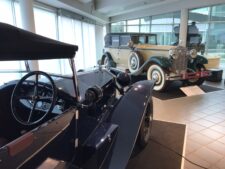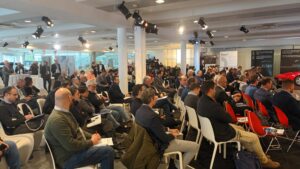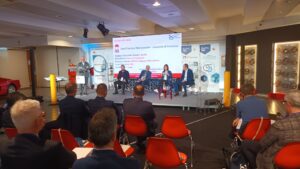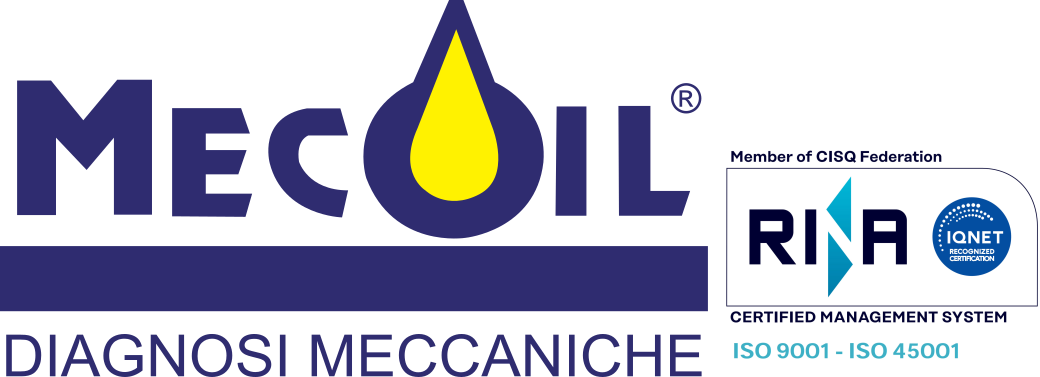In the presence of friends, colleagues and experts from the world of maintenance, the 30th National Aiman Conference was held, in its many forms, along with the 6th Maintenance 4.0 Conference.
A skilful direction in a decidedly original location, the Nicolis Museum, in which are collected historical testimonies of great cultural value.



As always, the Secretariat (supervised by Patrizia) operated flawlessly and while waiting for the work to begin we had the opportunity to explore the various “four-wheeled” proposals and more. Then there was a greeting from President Bruno Sasso, with references to the industrial world, which increasingly sees Maintenance as a constructive element, both in its historical and traditional form and in its current 4.0 and 5.0 evolutions. There is still a lot to do, but these are the moments of gathering and cultural exchange that allow us all to grow. Heartfelt thanks should be given to the leaders of this initiative, Cristian Son (who took the opportunity to relaunch the Euromaintenance event scheduled for autumn ’24 in Italy) and M. Marangoni, as well as the staff of Tim Global Media.

The first of the scheduled round tables began soon after, moderated by Alessandro Spadini, the Plant Director of Barilla Parma, who has been collaborating with Aiman for almost 20 years. Speakers included Raffaele Bini – Technical Manager of Generale Conserve, Anna Mazzoleni – Program manager Service 4.0 of ABB, Daniele Nori – Chief Operations Officer of Lucart, and G. Adriani – Director of Mecoil Diagnosi Meccaniche Srl. Spadini introduced the debate by involving the people present and at the end of the speeches he turned to Adriani asking the question: by its very characteristic, lubrication and its management is transversal to any industrial system: how have the skills necessary for the application of a condition monitoring system changed?

Answer: In this area, which, although specific – as underlined by Spadini – is universal and transversal for any industrial context, from transportation to manufacturing, from pharmaceuticals to aerospace, there has been an incredible evolution of systems. In a sort of race for the downsizing of components, there is an incessant search for efficiency and the “compaction” of machines (including tanks, circuits, exchangers) which were discussed only at the end of the R&D process, to make up for the deficiencies (emerging in the testing), including lubrication. Let’s call it “extreme ratio”.
This has inevitably led to a significant stress on the fluid responsible for increasingly performing the role of heat/energy dissipator (see automotive, hydraulics) compared to the historical “tasks” of improving frictions. A 200 KWa reducer designed and modeled to be contained in a bulky case, in which splash lubrication was provided by a crankcase with over 30 l. of oil, today perhaps operates with less than half the amount of lubricant, enclosed in a very compact chassis, incapable of dissipating such a large amount of calories.
This results in the need to use a forced lubrication system, through recirculation, with a pump, filter and exchanger. The chemical industry has been able to rise to the challenge, offering a vast range of specific, increasingly high-performance products. With a myriad of new formulations (such as petrochemical bases, but also tailor-made additives) which in turn have required new and more careful safeguard measures for the operators involved. SDS and technical data sheets, the consultation of which requires much “more” than the bare minimum of competence, which cannot be improvised.
The names and acronyms associated with these products, if not interpreted correctly, can lead to serious errors, creating “mixtures” that are detrimental for the life of the machinery. New and more in-depth investigations into this essential and ubiquitous fluid draw inspiration from this evolutionary process in which (unfortunately) oil remains the sacrificial victim, often having faults incorrectly blamed on it.
The comparison between clinical analysis of human blood and predictive checks of lubricants is increasingly significant. It is not enough to rub a drop of oil between your fingertips in order to determine if “it’s still good”, but instead it is necessary to resort to very refined on-site and off-site analysis techniques to be able to predict its residual useful life, the right intervals of exchange or filtration, keeping under control the subtle precursors of phenomena which (if neglected) can lead to unexpected malfunctions, which have repercussions on the entire production cycle.
Therefore, it is an advanced, punctual, specific technique for investigating (these are the basis of conditions’ monitoring) followed by skills, connectivity and “brainstorming” to stimulate effective conclusions. From the formula “periodic samples to a certified Laboratory” the “online screening” approach is progressively being studied.
But the journey is still long. Unfortunately, nowadays lubricants (see previous considerations) are very varied products, and it’s impossible to “photograph” them and determine standard conditions that would be valid regardless of their variations. Such is what is now happening in the Vibrotechnics field. Assuming that the various (multiple) sensors involved in this research provide realistic parameters, the downstream path is fairly clear. That is, the “lubrication 4.0” approach is actually available, provided that very accurate upstream screening is carried out. And in this field our investigations (> 10 years), see the Monitoil® project, have made great progress, demonstrating in practice the validity of this strategy. The work, especially in terms of education and training, is still long, but the premises have been laid.
The morning continued with other contributions from qualified speakers, then ended with a lunch that allowed the participants to immerse themselves in the magnificent atmosphere of the museum, exchanging opinions and looking forward to their goals for the upcoming year.
